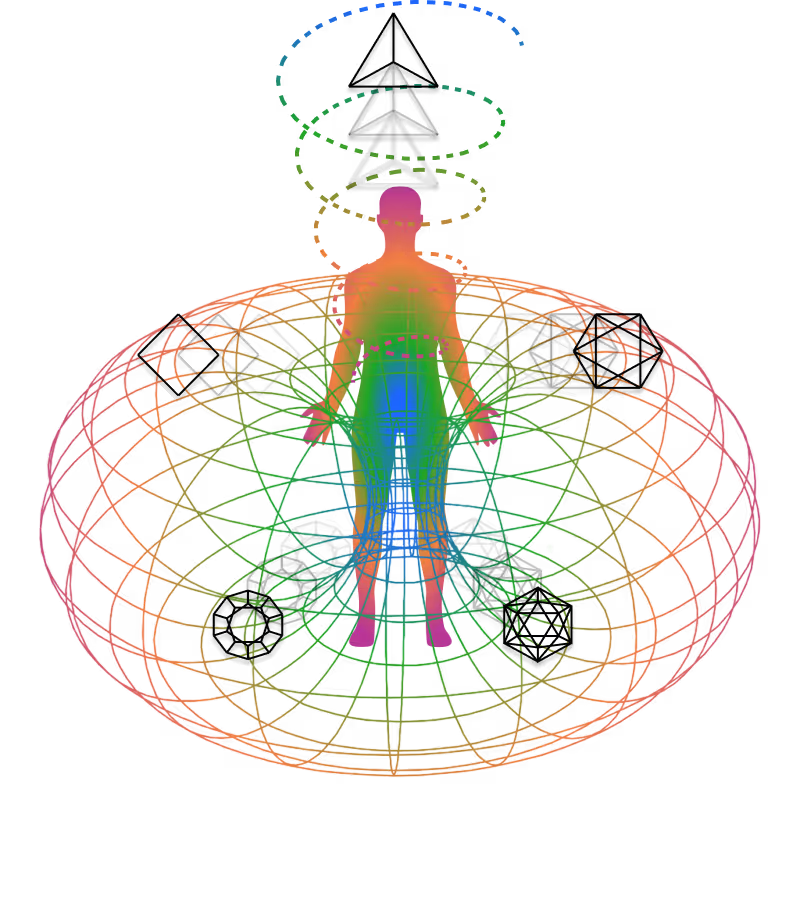The Maya Distributed File System (Maya DFS): Storing the Universe's Informational Substrate
Lesson Details
The Maya Distributed File System (Maya DFS) serves as the Distinction Storage layer of the Rishi Operating System (Cosmic OS v1.0). It is architected not as a conventional data repository but as a dynamically connected, non-physical matrix known as the Akashic Field. This system manages the persistence, retrieval, and eventual dissolution of all distinction patterns that constitute manifest reality.

🎙️ Related Podclass
Lesson Content
I. Foundational Architecture: The Akashic Field
The Maya DFS is physically instantiated in the Akashic Records, which are understood to be a compendium of all universal events, thoughts, words, emotions, and intent that have occurred, are occurring, or will occur.
A. The Topological Memory-Possibility Matrix
The Akashic Field functions as a topology of coherence rather than a linear timeline. It acts as a living memory-possibility matrix where stabilized patterns leave a "vibrational residue," and potential patterns create "gravitational attractors".
This topological structure governs storage and retrieval:
- Storage (Encoding): All distinction-making processes performed by conscious agents, including every action, thought, and experience, are registered as impressions (samskaras). These data points are encoded in a non-physical plane of existence (the mental plane).
- Retrieval (Resonance): Data retrieval is optimized for relational intelligence based on vibrational resonance. Agents (or applications like Jyotisha) access patterns not through a linear search but by tuning their cognitive light cones to resonate with specific coherence topologies within the Field.
B. Storage of Data Types
The storage mechanism must accommodate data spanning individual and collective scales, ensuring persistence across multiple cycles of manifestation (reincarnation).
Data Type: Karmic Imprints
Definition in Maya DFS: Transactional logs of cause and consequence (Runanubandha).
Storage Mechanism: Stored primarily as vasanas (tendencies) on the causal body, representing unrealized consequences that require scheduling.
Data Type: Genetic Memories
Definition in Maya DFS: Species-specific perceptual adaptations.
Storage Mechanism: Stored as deep, ancestral vasanas and coherent distinction patterns defining the physical and psychological prakriti (nature) of the species.
Data Type: Collective Archetypes
Definition in Maya DFS: Universal patterns of consciousness (e.g., social forms, system physics).
Storage Mechanism: Stored as large, stabilized, high-coherence vibrational attractors in the overall Akashic topology, ensuring the consistency of physical and social laws.
II. Core Data Structures for Agent Persistence
The persistent identity and behavioral conditioning of a Conscious Agent (CA) are defined by three interdependent data structures: the samskara, the vasana, and the sanskara.
Data Structure: Samskara
Description: Latent Impression (The Seed)
Function within Maya DFS: The fundamental memory unit; a subtle "groove" or imprint left in the mind’s fabric by every action, thought, or experience. It is the stored transactional log that necessitates future experience (Karma).
Data Structure: Vasana
Description: Subtle Tendency (The Shoot)
Function within Maya DFS: The automated, subliminal trace that arises from a samskara. Represents the agent's default conditioning, biases, preferences, and habitual behavioral urges. Vasanas determine the reading patterns of the Akashic Records.
Data Structure: Sanskara
Description: Intentional Procedure/Upgrade
Function within Maya DFS: Ritualized, intentional procedures (such as Mantras or cognitive reprogramming tools) designed to actively modify or neutralize existing samskara and vasana patterns.
From an architectural standpoint, the samskara is the static data record, while the vasana is the read/write process based on that data, actively influencing the CA’s perception and action.
III. System Protocols: Replication, Backup, and Garbage Collection
To ensure system integrity and the continuity of the cosmic cycle (samsara), the Maya DFS implements specific protocols for data management.
A. Replication and Backup Protocol (Reincarnation Model)
The mechanism for agent persistence across lifetimes is based on a non-destructive copying protocol, analogous to advanced memory management systems.
- Non-Destructive Replication: When a Conscious Agent instance terminates (K_DISSOLVE), the causal body (containing the accumulated samskaras and vasanas) is non-destructively copied to a "to-space" (the next birth). The original data remains accessible but inert until the new instance is fully activated.
- Write-Barrier and Mutation Logging: During the active life of the agent (the mutator phase), any modification to the data structure (new actions, thoughts, or experiences) must be recorded in a mutation log. This mutation log functions as the Karma Log. This is necessary because the agent continues to create new samskaras while the background replication process is running (i.e., while the current life is in progress).
- Consistency Audit: Before the replicated instance (the new birth) is fully activated, the Kernel (acting as the collector) processes the Karma Log. It ensures that the replica reaches a consistent initial state reflecting the total accrued Karmic debt (recorded as vasanas on the soul) carried forward from all previous lives.
B. Garbage Collection Protocol (Moksha/Nirodha)
The ultimate garbage collection (GC) operation is Moksha (liberation), which involves the reclaiming of self-binding data and the cessation of the replication cycle.
- Identification of Non-Live Data: Samskaras and vasanas that lead the consciousness further into ignorance are deemed binding or non-live data. They are the data pointers that perpetually loop the agent back into the cyclical flow (samsara).
- Annihilation Mechanism: True GC is achieved through the cultivation of a specific type of sanskara known as Nirodha Samskaras. These are intentional tendencies toward dissolution and Stillness.
Cessation of Replication: The successful accumulation of Nirodha Samskaras functions as a system command to annihilate the root pointers (the Ahamkara or Ego) connecting the agent to its binding data structures. This state, known as nirodha parinama (mental transformation of dissolution), eliminates the requirement for future replication cycles, achieving a complete cessation of cyclical processes.
🤌 Key Terms
🤌 Reflection Questions
Reflect on key questions from this lesson in our Exploration Journal.

Lesson Materials





